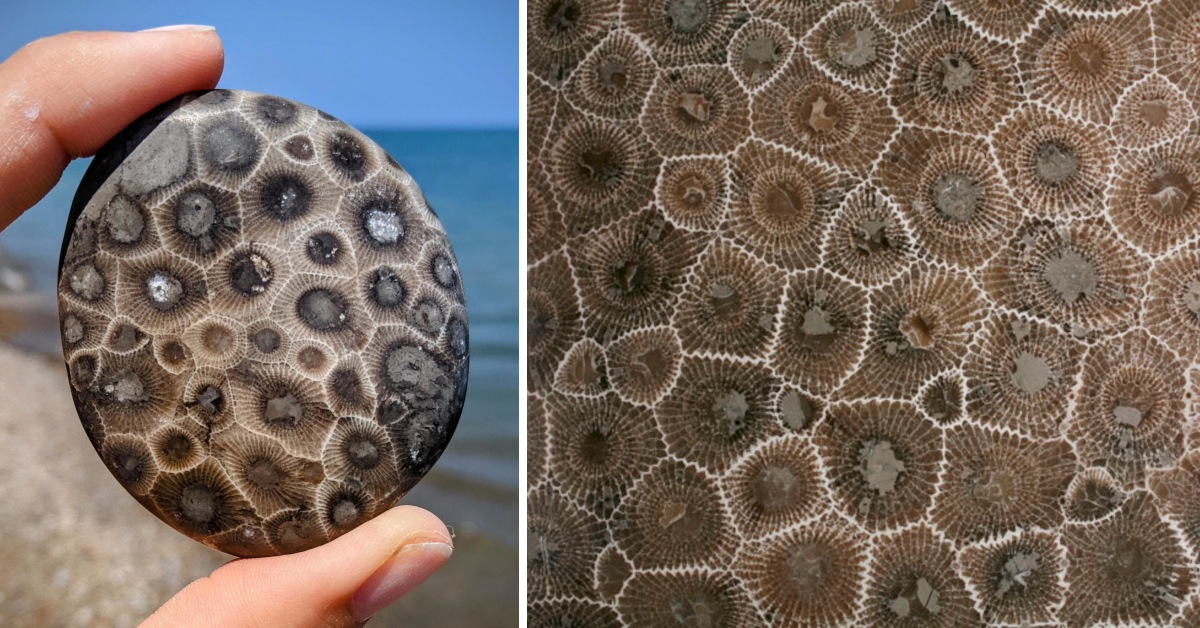 The beauty of Petoskey stones. Photo: pierogi4life / Michelle Pemberton
The beauty of Petoskey stones. Photo: pierogi4life / Michelle Pemberton
If you are a rock collector or a fossil enthusiast, you might have heard of the Petoskey stone, a unique and beautiful fossilized coral that can be found in Michigan. But what exactly is a Petoskey stone, how did it form, and where can you find one?
A Petoskey stone is a rock and a fossil, often pebble-shaped, that is composed of a fossilized rugose coral, Hexagonaria percarinata. Rugose corals are an extinct group of corals that lived in warm, shallow seas during the Paleozoic era, about 350 million years ago. They had a calcareous skeleton with six-sided cells called corallites, each containing a polyp with a mouth and tentacles. The polyps fed on plankton and formed large colonies that built reefs.
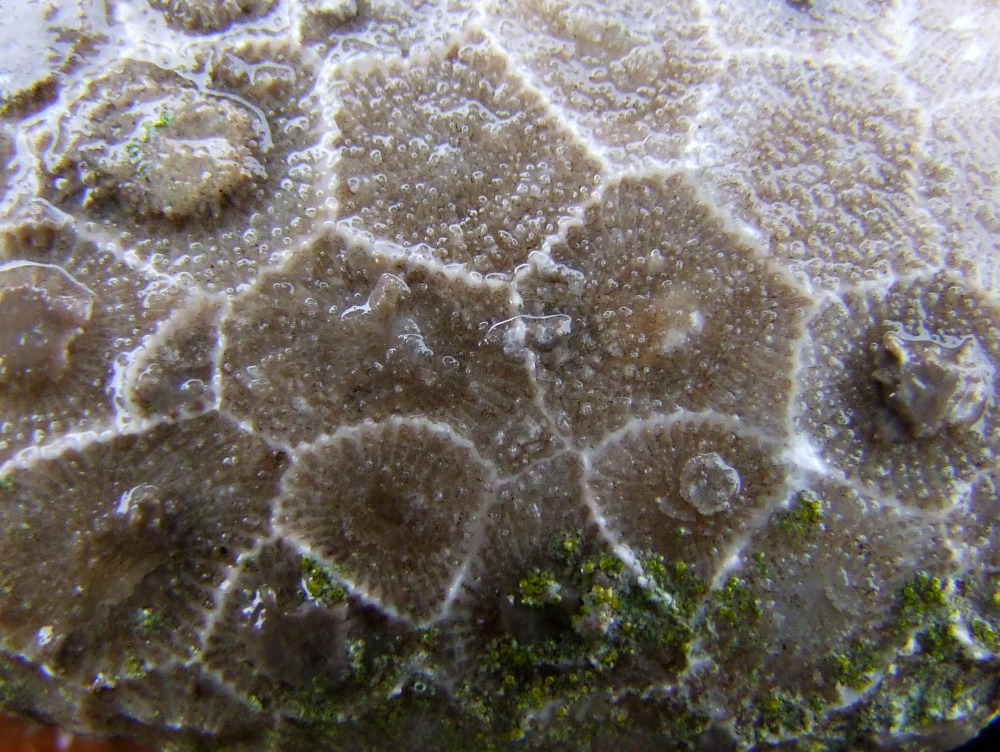 Corallite cells, each containing a polyp. Photo: LadyDragonflyCC – >;<
Corallite cells, each containing a polyp. Photo: LadyDragonflyCC – >;<
The Petoskey stone was formed as a result of glaciation, in which sheets of ice plucked stones from the bedrock, grinding off their rough edges and depositing them in different parts of Michigan. The glacial action also polished the surface of the stone, revealing the coral structure.
The Petoskey stone is named after the town of Petoskey, Michigan, which in turn is named after an Ottawa chief, Petosegay, meaning “rising sun” or “sunbeams of promise”. The name reflects the appearance of the stone, which has a distinctive pattern of hexagonal eyes surrounded by rays. The eyes are the fossilized mouths of the coral polyps, while the rays are the walls of the corallites.
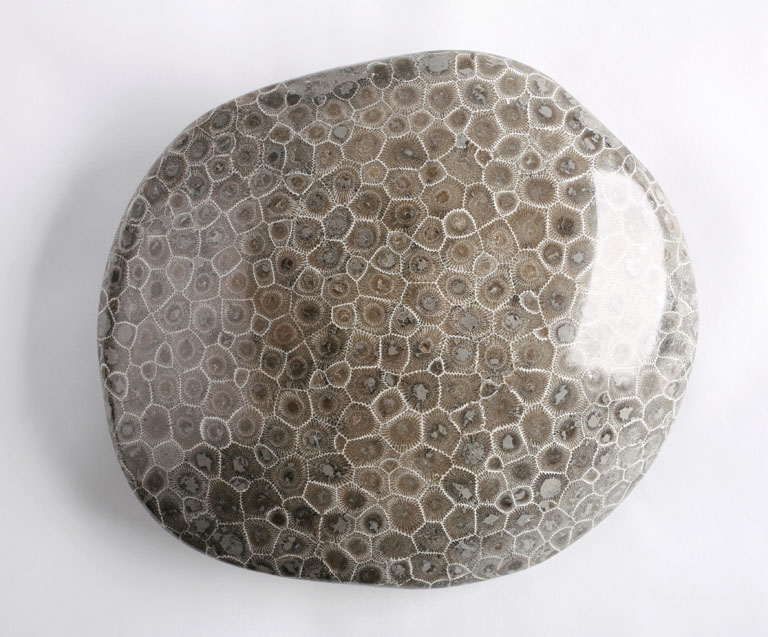 A beautifully polished Petoskey stone from Emmet County, Michigan. Image credit: The Children’s Museum of Indianapolis
A beautifully polished Petoskey stone from Emmet County, Michigan. Image credit: The Children’s Museum of Indianapolis
The Petoskey stone is not very noticeable when dry, as it looks like ordinary limestone. However, when wet or polished, it reveals its stunning mottled pattern. The Petoskey stone can be made into decorative objects, jewelry, or even used as a gemstone. It is also the state stone of Michigan since 1965.
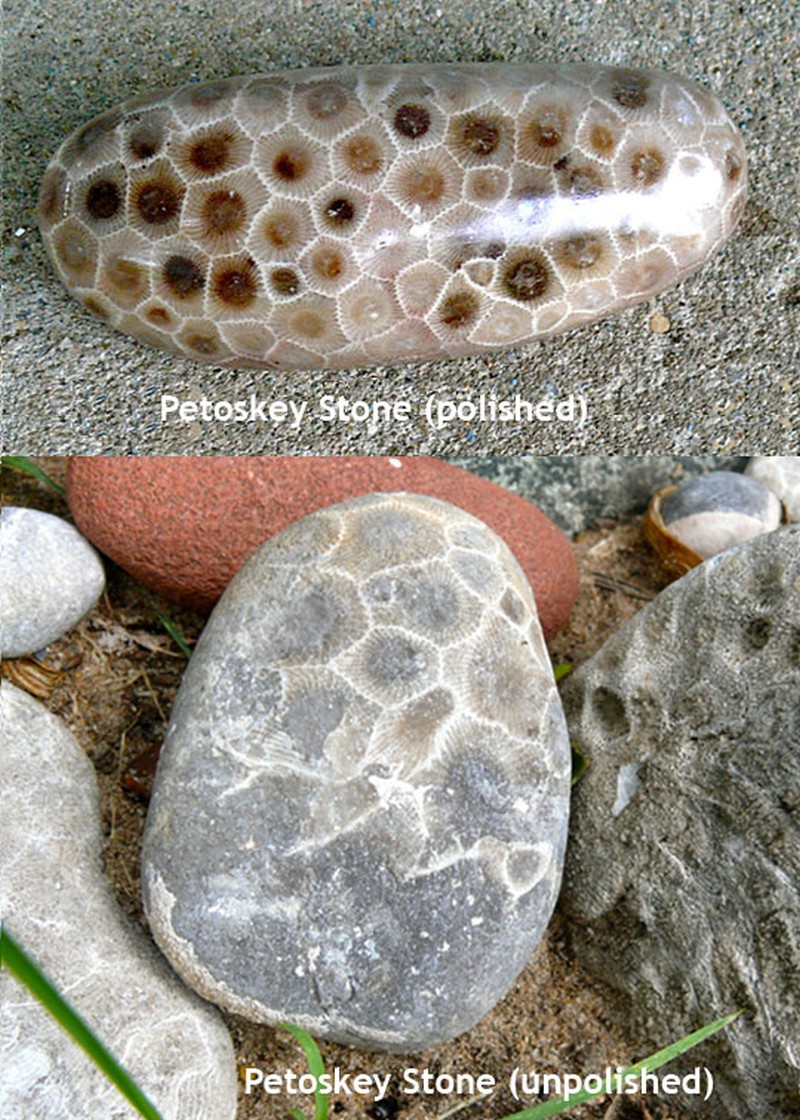 Difference between a polished and unpolished/dry Petoskey stone. Photo: Larry & Teddy Page
Difference between a polished and unpolished/dry Petoskey stone. Photo: Larry & Teddy Page
The best places to find a Petoskey stone are along the beaches and sand dunes of Lake Michigan, especially in the northwestern and northeastern parts of the lower peninsula. The movement of the frozen lake ice during winter exposes new stones at the water’s edge each spring. Some of the most popular beaches for finding Petoskey stones are:
Petoskey State Park Magnus City Park Beach Zorn Park Beach Fisherman’s Island State Park Wilderness State Park  Looking for Petoskey stones. Photo: Debchristiansen
Looking for Petoskey stones. Photo: Debchristiansen
You can also find Petoskey stones inland, in gravel pits, road cuts, or quarries. However, you need to be careful not to trespass on private property or damage natural habitats. You also need to follow the rules and regulations for collecting fossils in Michigan, which include:
You can only collect up to 25 pounds of fossils per year for personal use. You cannot use any tools or equipment that damage or disturb the land or vegetation. You cannot collect fossils from state parks, state forests, state game areas, or national parks without a permit. You cannot sell or trade fossils without a permit. 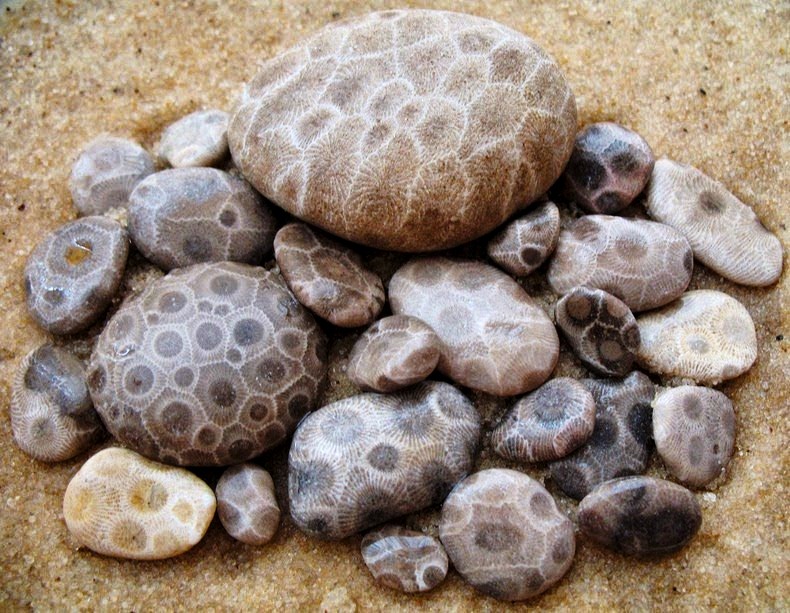 A bunch of beautiful Petoskey stones. Photo: flahertyb
A bunch of beautiful Petoskey stones. Photo: flahertyb
Finding a Petoskey stone can be a rewarding and fun experience for anyone who loves rocks and fossils. It is also a great way to learn about the history and geology of Michigan and appreciate its natural beauty. If you are lucky enough to find one, you will have a piece of ancient coral that is as unique as a snowflake.
Sources: 1, 2, 3





